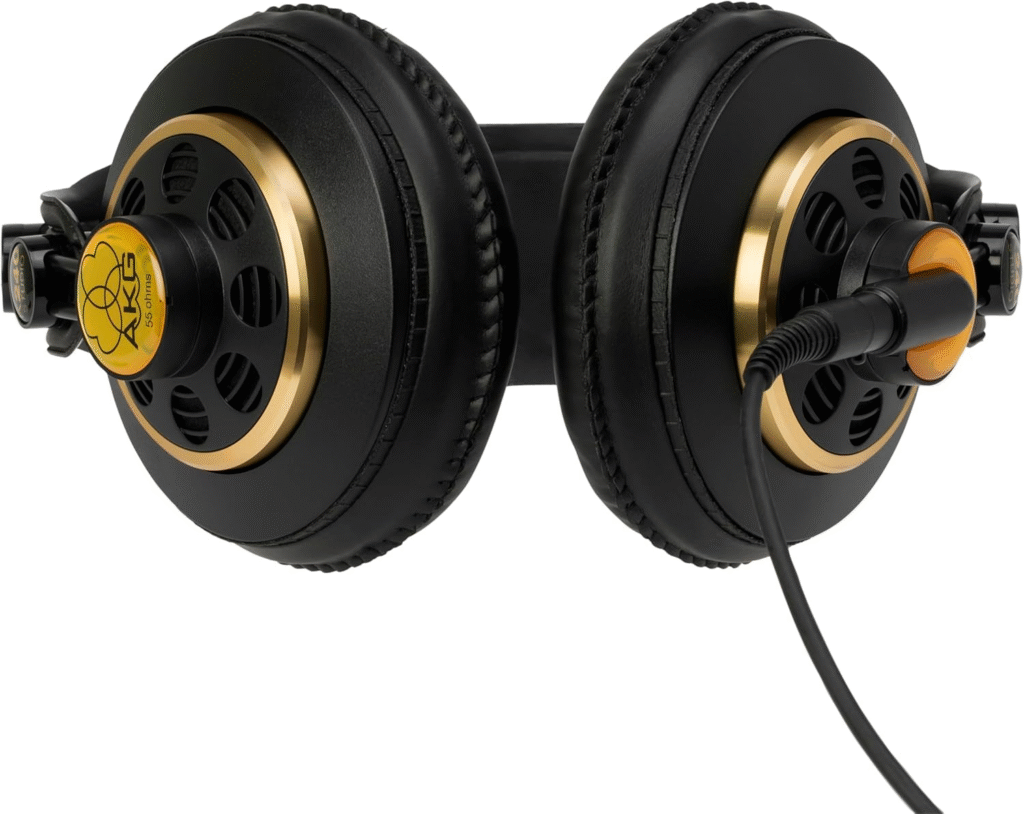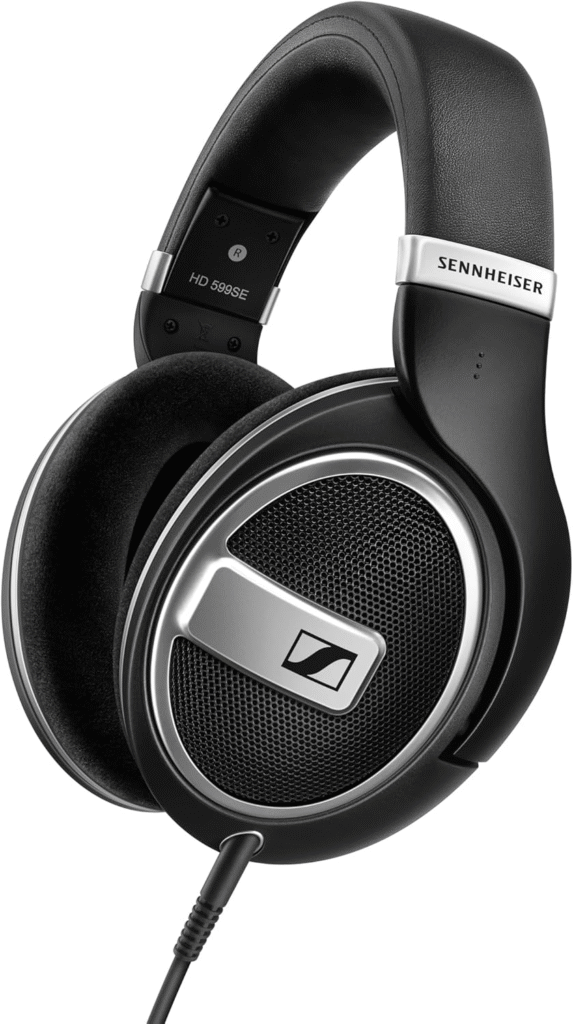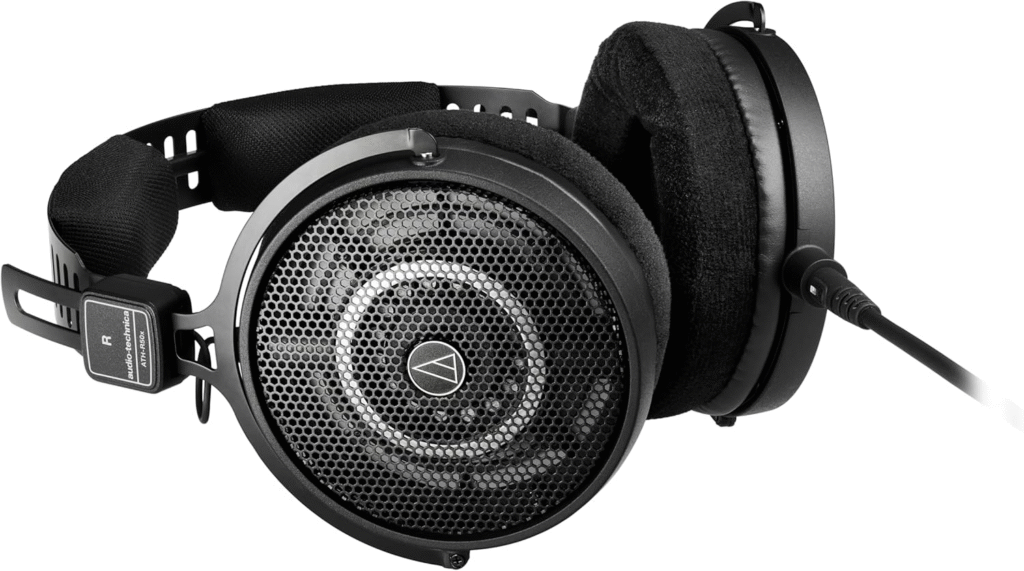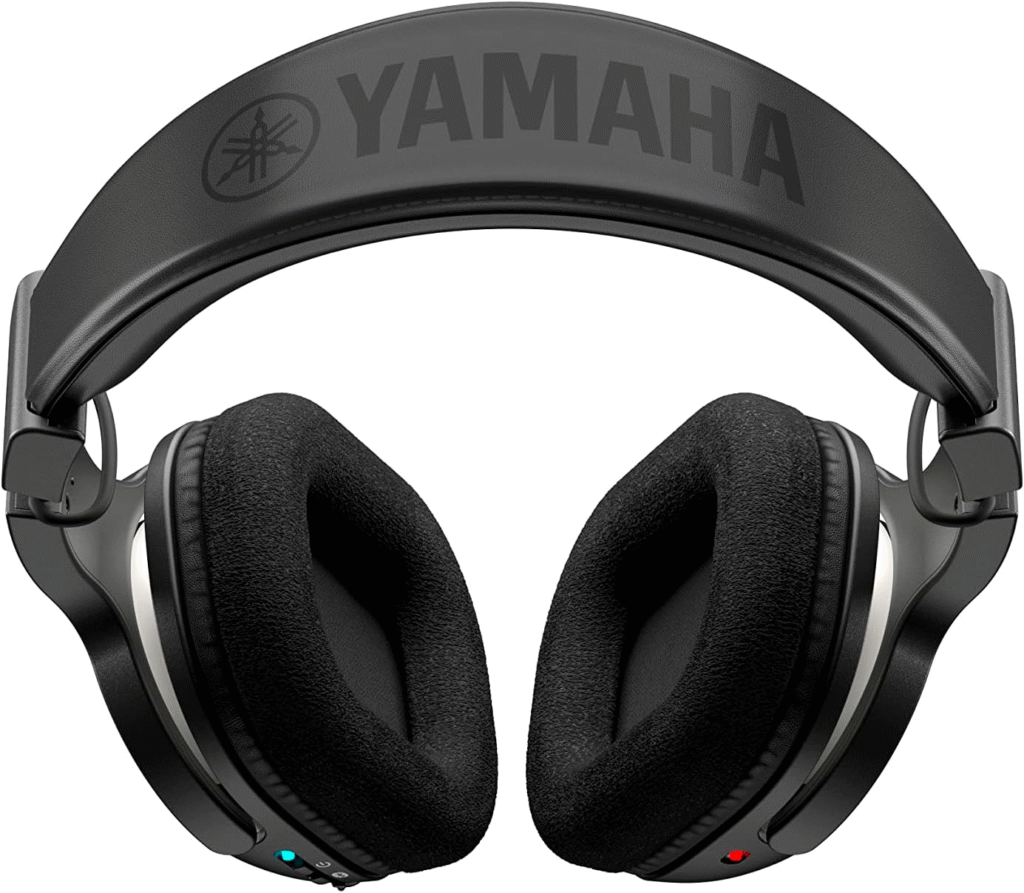I regularly have customers ask me for headphone recommendations, and I’ve settled on a few favorites. I prefer open or semi-open headphones, and prioritize lightweight, soft-touch comfort. A good set of headphones provides clear, high-fidelity sound and is comfortable to wear for hours.
I’ve used quite a few headphones for keyboards and keyboard repair, and I tend to be very hard on them! When I’m performing repairs, I find inexpensive headphones don’t have enough fidelity to accurately hear defects in pianos. If a customer complains of buzzing or peaking, it’s much harder to hear the problem if the headphones I’m using to test introduce their own buzzing and hissing.
Some links in this article are affiliate links. As an Amazon Associate I earn from qualifying purchases. Your click fuels hours reviewing old service manuals—at zero added cost to you.
Open & Semi‑Open Picks (Most “Piano‑like”)
AKG K240 Studio Semi-Open Headphones
The AKG K240 Studio Headphones have been my go-to for years. The sound quality is excellent, but my favorite feature is their semi-open design. If I’m using these at a keyboard, I can still hear what’s going on around me—they don’t isolate you from the room as much as closed-back headphones.
This also makes them feel lighter, and they’re easier to wear for long periods. Because they let in ambient sound, they more closely emulate the experience of playing a real piano.
And finally, they’re inexpensive compared to other good-quality headphones. I often use these when testing digital keyboards, as the sound quality is great, and I can still hear when somebody walks in!
You will also need a 3.5 mm to 1/4″ adapter for most keyboards. The AKG K240 headphones are available on Amazon.

Sennheiser HD 599 Open-Back Headphones
These are also a great choice, and are more open than the AKG K240s. They are very comfortable and lightweight, and Sennheiser has a long-established reputation in the world of music and sound. If your budget allows a few extra dollars, these are worth it for the regular player!
You’ll need a 3.5 mm to 1/4″ adapter for most keyboards. The Sennheiser HD 599 headphones are available on Amazon.

Audio-Technica ATH-R50x Open-Back Headphones
These headphones have a fully open-back design. Audio-Technica states it allows “unrestricted airflow, which eliminates internal resonance and provides extremely quick transient response.” What all of that means is that you won’t feel pressure in your ears while you use these! The Audio-Technica ATH-R50x headphones are available on Amazon.

Yamaha YH-WL Series Wireless Semi-Open Headphones
Wireless headphones are usually not a wise choice for digital pianos and keyboards. They typically experience “latency,” meaning that there’s a delay between the time you press the key and when you hear it in your ear. With Bluetooth headphones, this delay can be as much as a quarter of a second. But even with low-latency aptX headphones, it’s around 40 ms—still too long.
Enter the Yamaha YH-WL headphones. These are excellent, wireless, semi-open headphones with incredibly low latency. They claim a mere 4 ms of latency from the touch of the key until you hear it in your ear. Couple that with its semi-open design, and you’ve got the ideal headphones for digital keyboards.
However, they are considerably more expensive than the other options on this list, currently selling for nearly $400 on Amazon at the time of this writing. But they’re worth it!

Closed‑Back Picks (Better Isolation)
Sony MDR7506 Closed-Back Headphones
These are classic, high-quality studio headphones. They have very good sound quality and noise isolation, and include a 1/4″ adapter that fits most keyboards. They’re conveniently foldable, and have a lightweight design that’s comfortable for extended play sessions.

More Tips and Thoughts
Impedance & sensitivity
For direct‑from‑keyboard use, aim for ~32–80 Ω so you get healthy volume without an external amp. Higher‑impedance headphones can sound great, but they’re quieter for a given volume on your keyboard.
Open-back vs. closed-back
Open/semi‑open headphones sound more “like the room” but leak sound. With open headphones, you’re more aware of your surroundings, and the experience is more similar to playing an actual acoustic piano.
Closed‑back headphones isolate better for loud environments and shared spaces. They tend to be more difficult to wear for longer periods of time, and create more of a sense of pressure in your ears when playing louder sounds.
Cable & plug
There are three different kinds of common headphone plug, and they appear in both 3.5 mm plugs and 1/4″ plugs. When you get headphones, it’s important to use the correct adapter for your plug. Similarly, when you purchase extension cords for your headphones, you must make sure those extensions match your particular cord.
TS (tip-sleeve) has two conductors and carries mono, unbalanced audio.
TRS (tip-ring-sleeve) has three conductors for left, right, and ground (or balanced mono).
TRRS (tip-ring-ring-sleeve) adds a fourth contact for headsets with a mic/remote. If you use one of these with your keyboard, you’ll also need a TRRS to TRS adapter.
The headphones described in this article all have 3.5 mm TRS plugs for stereo sound. If you get no sound out of your headphones, or you’re getting sound in only one ear, make sure you’re using a TRS adapter like the 3.5 mm to 1/4″ adapter recommended above.
Have other problems with your keyboard? Check out my guide on common keyboard and digital piano difficulties.
